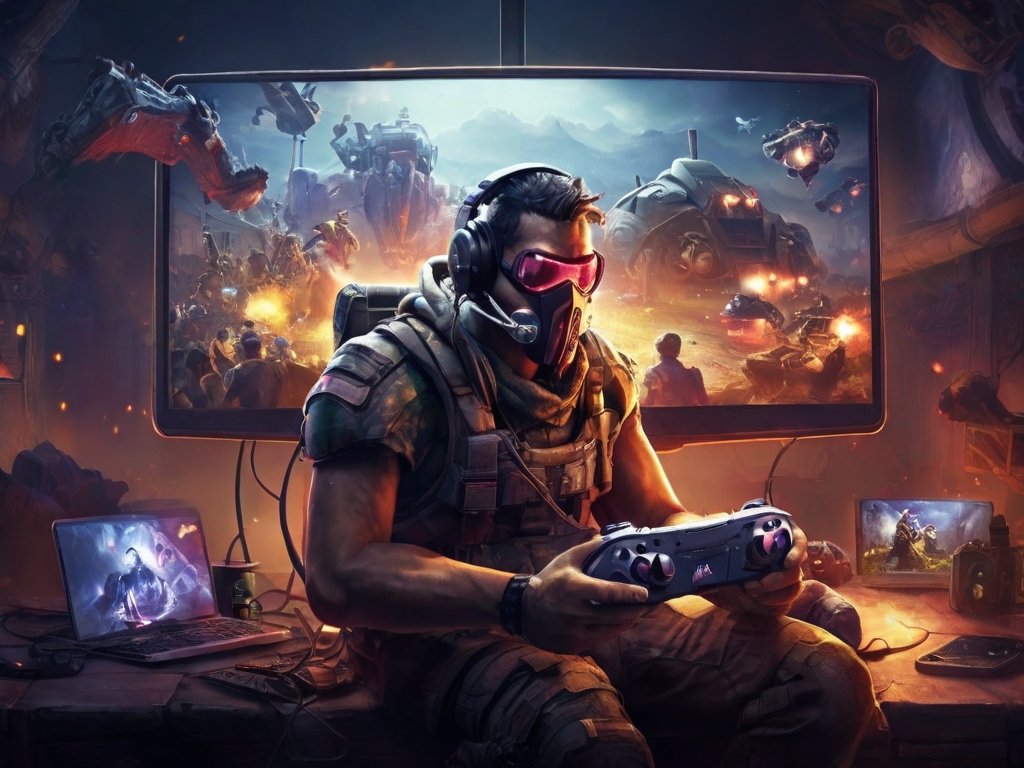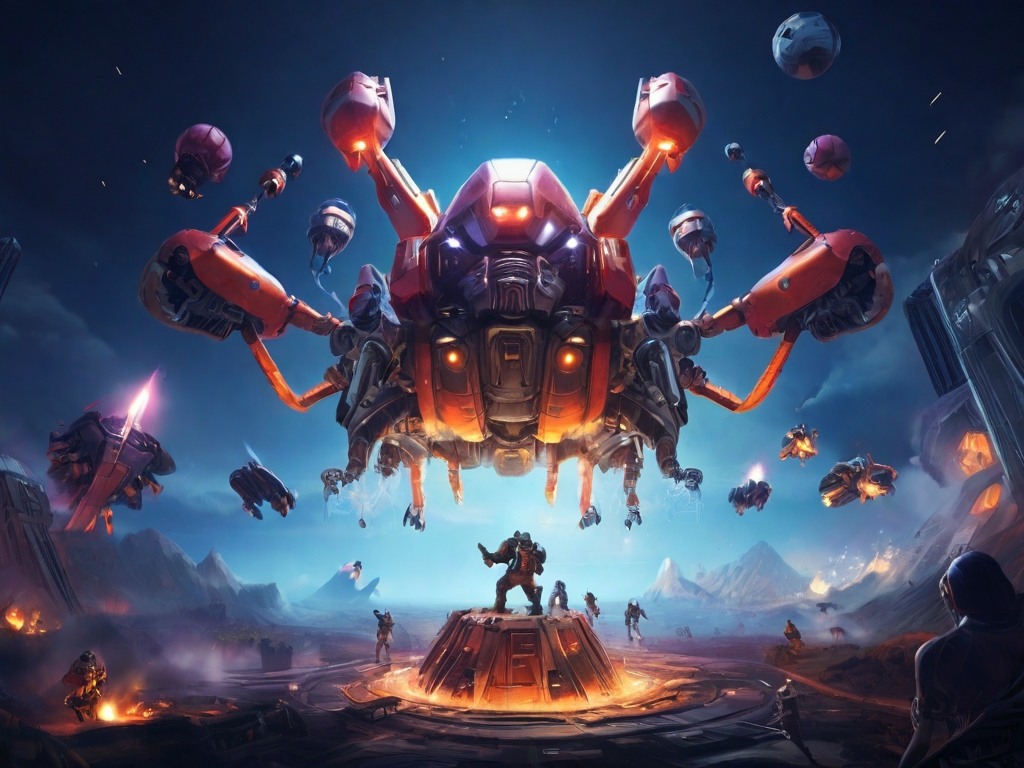
We understand the intricacies and challenges of bringing a gaming masterpiece to life. Behind every captivating game lies a meticulous process, carefully crafted to ensure a seamless journey from concept to completion. Today, we delve into the five fundamental game development stages that define the process at Melior Games.
Planning
Every game begins with a spark of imagination. This initial stage involves brainstorming, exploring ideas, and defining the game’s core concept. It’s where creativity flourishes as we envision the game’s storyline, characters, mechanics, and overall vision. Collaboration is key during this phase, as diverse perspectives contribute to refining and shaping the initial concept into a solid foundation for development.
Market Research and Conceptualization
The planning stage kicks off with thorough market research and analysis. We delve into current gaming trends, player preferences, and market demands to identify opportunities and gaps. Armed with insights, we embark on the creative process of conceptualization, brainstorming ideas that resonate with our target audience while aligning with our vision and capabilities.
Defining Project Scope and Goals
With a clear understanding of market dynamics and creative direction, we define the scope and goals of the project. This involves outlining the game’s genre, target platform(s), intended audience, key features, and desired outcomes. Establishing achievable milestones and objectives at this stage is crucial for setting realistic expectations and guiding the development process.
Team Formation and Resource Allocation
Putting together the correct team is essential to any project’s success. Based on the project’s needs, we put together a multidisciplinary team at the planning stage that includes developers, designers, artists, and other experts. We ensure every team member has the knowledge and abilities required to contribute to the project’s success by allocating resources wisely.
Creating Design Documents and Prototypes
Central to the planning phase is the creation of comprehensive design documents and prototypes. These documents serve as blueprints that outline the game’s mechanics, gameplay flow, storyboards, level designs, user interface elements, and art style. Prototypes allow us to validate concepts, test gameplay mechanics, and gather early feedback from stakeholders, refining our vision before full-scale development begins.
Risk Assessment and Contingency Planning
Anticipating and mitigating risks is essential to minimize potential roadblocks during development. We conduct thorough risk assessments, identifying potential challenges such as technical limitations, resource constraints, or market uncertainties. By proactively identifying risks and developing contingency plans, we enhance our ability to navigate unforeseen obstacles and keep the project on track.
Establishing Project Timeline and Milestones
A well-defined project timeline with clear milestones is instrumental in ensuring timely delivery and project management. We break down the development process into manageable phases, setting deadlines for key deliverables and checkpoints. This allows us to track progress, identify any deviations from the plan, and make necessary adjustments to stay on schedule.

Pre-Production
With the concept in place, we transition into the pre-production phase, laying down the groundwork for the game’s development. This stage involves comprehensive planning, outlining project scope, defining technical requirements, and creating detailed documentation such as design documents, art style guides, and project schedules. Effective pre-production sets the stage for a smooth development process, minimizing unforeseen challenges and maximizing efficiency.
Refining the Concept
Pre-production is the stage where the concept is refined and validated, while conceptualization defines the creative direction. We have extensive deliberations and ideation meetings to develop the fundamental components of the game, honing its mechanics, plot, characters, and general concept. This iterative process ensures the idea is solid, compelling, and compatible with our development capacity as well as player expectations.
Creating Detailed Documentation
Documentation is the cornerstone of effective project management and collaboration during pre-production. We meticulously craft a range of documents that serve as guiding references for the entire development team. These include design documents, outlining gameplay mechanics and features; technical specifications, detailing platform requirements and development tools; art style guides, defining the visual aesthetic of the game; and project schedules, mapping out milestones and deadlines.
Prototyping and Iteration
Before starting a full-scale development project, prototyping is a helpful technique for testing ideas and gameplay elements. We may evaluate mechanics, try different concepts, and get stakeholder feedback by building prototypes.
Building the Development Pipeline
Having a strong development pipeline is crucial to optimizing productivity and simplifying processes. We create and put into place pre-production routines that help team members—from programmers and artists to designers and quality assurance testers—work together more easily. For smooth integration and collaboration across all development facets, we set up version control systems, asset management protocols, and communication channels.
Securing Resources and Budgeting
Sufficient resources are necessary to carry out the project in an efficient manner. We evaluate the resources needed and set aside funds in pre-production. This entails raising money, obtaining the required licenses for software and hardware, and forming alliances with other suppliers or service providers. We guarantee that the project stays on track financially and can accomplish its goals within the allotted timeframe by carefully managing resources and budgeting..

Production
At this point we have a well-defined plan in place from the pre-production phase. So our skilled group of engineers, designers, artists, and developers works closely together to make the game a reality. Coding, creating artwork, level design, sound design, and combining disparate components into a unified whole are all included in this step. Agile processes and constant communication guarantee that the project stays on course, changing as necessary to accommodate new needs and input.
Coding and Development
Coding and development are the core processes of the manufacturing phase. The skillfully written code that drives the game’s features and mechanics is the result of our team of engineers and programmers.
Artistic Creation and Design
Our artists and designers put forth endless effort to create fascinating visuals and immersive worlds, while developers work diligently to bring the game’s functionality to life. Every element of the game’s visual, from ambient elements and special effects to character designs and animations, is painstakingly created to arouse curiosity, emotion, and astonishment. Our artists work closely with the production team to make sure that the story concepts and gaming mechanics are harmoniously complemented by the visual aspects.
Level Design and Environment Building
As it shapes the player’s path and increases engagement, level design is an essential component of game production. Our level designers painstakingly create engaging landscapes, clever puzzle designs, and engaging interactive components that both challenge and excite players during the production stage. Every level, whether they are large open landscapes or complex dungeon mazes, is painstakingly created to provide a distinct and unforgettable experience that will captivate gamers and leave them wanting more.
Integration and Optimization
As the game is developed, many components are integrated and optimized to work together. Our team works very hard to merge gameplay elements, art materials, and audio components into a cohesive whole. The development team boosts frame rates, reduces loading times, and optimizes resource usage. In such way we hope to deliver the best gaming experience possible while ensuring fluid gameplay on all platforms and devices.
Testing and Quality Assurance
Under strict testing and quality assurance procedures, the game is refined as it develops to find and fix any errors, malfunctions, or inconsistencies. Ensuring a smooth and refined gaming experience for gamers is mostly dependent on this step. Our goal is to make sure the game lives up to our high standards of quality before the release. Devoted QA staff painstakingly tests every part of it, from graphics fidelity to gameplay mechanisms.
Comprehensive Testing Strategies
The first step in our testing and quality assurance process is developing thorough testing plans. They are customized to meet the particular needs of every game. We use a range of testing techniques. First, regression testing is crucial to find any unintended side effects of code changes. Second, compatibility testing guarantees smooth performance across various platforms and devices. And also performance testing maximizes frame rates and loading times, and functional testing to verify gameplay mechanics.
Bug Tracking and Reporting
Our committed QA testers thoroughly record any problems they find as they thoroughly test the game, from little glitches to fatal errors. We categorize and rank reported bugs using powerful bug-tracking tools. Each issue has a level of severity and priority, which helps monitor their fix during the testing phase. This open and methodical approach guarantees that no problem is overlooked or handled, enabling us to uphold the highest levels of excellence and polish.
User Experience Testing
We prioritize user experience testing over technical capabilities in order to assess the game’s overall feel, flow, and accessibility. For players of all skill levels, our testers evaluate aspects like menu navigation, in-game feedback systems, control responsiveness, and onboarding tutorials to make sure the game is easy to understand and entertaining. We aim to produce games that are not just technically sound but also entertaining and immersive by giving user experience testing first priority.
Localization and Cultural Sensitivity
To make sure that text, audio, and visual components in games meant for a global audience are appropriately translated and suited for the target culture, localization testing is crucial. Our localization testers carefully go over translated information to ensure that it is accurate, linguistically consistent, and sensitive to cultural differences. They also look for potential translation problems. We make sure that players enjoy our games everywhere by embracing diversity and inclusivity in our testing process.
Compatibility and Performance Optimization
Our quality assurance team thoroughly tests the game across a range of hardware, operating systems, and screen sizes. It serves to find compatibility problems and enhance performance for a stable and fluid gaming experience. Whether using a mobile device or a top-tier PC, gamers can anticipate fluid gameplay and stunning visuals.
Post-Release Support and Updates
After the game release, QA continue to fix any issues that may come up after players have access to it. Our QA staff keeps an eye on problem reports, player feedback, and analytics data. They determine which post-release upgrades and fixes should be prioritized.

Release and Post-Production
The game is now ready for widespread distribution. It needs to be pushed to the target audience and released on multiple platforms. To improve the overall gaming experience, post-production tasks include receiving and handling customer complaints and providing updates or repairs. The success of the game depends on the continued participation and support of the community.
Post-Launch Support and Updates
The release of a game is not the end of its journey; it’s the beginning of a new phase of iterative improvement and expansion. Our commitment to post-launch support is unwavering, as we continue to refine, enhance, and expand the game based on player feedback and evolving market trends. We release regular updates, patches, and content expansions that introduce new features, address issues, and keep the game fresh and engaging for players. Whether it’s balancing gameplay mechanics, adding new levels, or introducing seasonal events, our post-launch support ensures that the game remains relevant and compelling long after its initial release.
Live Operations and Monetization
We prioritize live operations and monetization tactics that maintain the game’s long-term profitability in addition to funding its continued development. We incorporate monetization options that provide value and correspond with user preferences while maintaining the integrity of the gaming experience. These features range from in-game purchases and subscriptions to ad-based revenue models and DLC expansions. We guarantee the game’s long-term success and profitability by finding a balance between player happiness and income generation.
Data Analytics and Performance Tracking
We employ performance tracking and data analytics in post-production to keep an eye on important indicators like player engagement, retention, revenue, and user feedback. Our decision-making process is informed by data, which directs the introduction of new features, upgrades, and content to maximize player pleasure and optimize game performance.
Conclusion
We at Melior Games take great satisfaction in our dedication to quality throughout the whole game production process. By carefully adhering to these five phases and making use of our knowledge and enthusiasm for gaming, we hope to produce unique experiences that enthrall gamers everywhere. As we continue to push the frontiers of innovation and originality in game production, come along on this thrilling trip with us.




